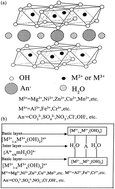Arsenic removal from water/wastewater using layered double hydroxide derived adsorbents, a critical review
Abstract
Arsenic pollution has become a worldwide environmental concern. Dangerous arsenic concentrations in natural waters threaten the health of millions of people, and this has received significant attention. Among the various technologies that have been developed for arsenic removal from water, the use of adsorption technology is considered to be a prevailing method, because the adsorption approach usually has high removal efficiency and the advantage of convenience of handling. In recent years, layered double hydroxides (LDHs) have become prime candidates for arsenic removal, due to their hydrophilic nature and cationic layered structures. Research on arsenic removal using LDHs is mainly focused on (1) the influence of the synthesis method and composition of the LDH, (2) the influence of the particle size of the LDH, (3) the influence of the Mg/Al ratio in LDHs, (4) LDH-based hybrids and (5) the competition with other anions. This paper provides a review of the currently available literature focusing on arsenic removal using LDHs for the five parts mentioned above. In addition, based on this overview, a closing section will suggest research efforts for future work. It is expected that this review will provide a summary of the main research in this area, and will also shed light on the direction of future development.

- This article is part of the themed collection: Editors' collection: Environmental chemistry: Pollution control


 Please wait while we load your content...
Please wait while we load your content...